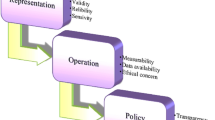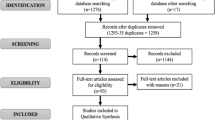Abstract
The road transport, as an important part of the whole contemporary transport system, has many advantages such as the flexibility, promptness, good accessibility and so on. However, the contradictions between the traditional development of road transport and natural environment and resource have been apparent. Specifically speaking, there are three aspects: (1) high consumption of resource; (2) land resource wasting; (3) severe pollution. Therefore, the sustainability assessment on transport infrastructures is highly necessary. This paper analyzes four problems of transport infrastructures including natural resource, environment, society and economy, and then a theory of sustainability assessment on transport infrastructures based on the quality and load of transport infrastructures is proposed. The assessment system contains 4 level-one indicators, 14 level-two indicators and 61 assessing criteria. The questionnaire method and AHP (Analytic Hierarchy Process) method are used to define the weights of every indicator. Finally, SDI (Sustainable Development Index) is introduced to express the sustainability of the infrastructure evaluated.
Access provided by Autonomous University of Puebla. Download conference paper PDF
Similar content being viewed by others
Keywords
- Traffic and infrastructure construction
- Sustainable development
- Performance assessment
- Index system
- Analytic hierarchy process
1 Introduction
The road transport, as an important part of the whole contemporary transport system, has many advantages such as the flexibility, promptness, good accessibility and so on. It is the symbol which can show the level of social economic development of a country or a region (http://www.jttj.gov.cn/shownews.asp?id=1756).
With the improvement of people’s living standard, the road transport in China has changed greatly. The contradictions between the traditional development of road transport and natural environment and resource, which can be classified as the following three parts: (1) high consumption of resource; (2) land resource wasting; (3) severe pollution, has become apparent (World Commission on Environment and Development 1987). Hence, it is necessary to assess the sustainability of transport infrastructure projects.
Extensive research is being carried out in this area. Xiong et al. (1999) discussed the relationship between the transport and sustainable economic development from a perspective of sustainable economic development and acknowledges that “the traffic development is closely related to the implementation of the strategy of sustainable development”. Zhu (1999) pointed out that an important criterion to measure the sustainable transport is whether the transport system could maintain long-term dynamic social net income or welfare maximum. Qian and Minghuai (2001) analyzed the negative impact of transportation infrastructure on the land and resources and suggested to eliminate the impact of transportation from three aspects of the economic policy, legal management and publicity and education. Zhou Jun (Jun and Yisheng 2005) analyzed the structure of the urban transport infrastructure and its collaborative relationship with the city and internal rules, proposed the integration mode of the sustainable development of urban transport infrastructure.
In this study, a useful assessment framework is established and the importance of the indicators in the framework is analyzed. A good expression of the assessment result is proposed to reflect the sustainability of the infrastructure.
2 Indicators for the Assessment System
The Aim of the sustainability assessment of transport infrastructures is to appraise the quality and performance provided by the road transport and the environment loading caused by it, finally propose some suggestions for improvement (Liu 2006). For the sake of assessing from various perspectives, a multi-level indicator system is established, which can reflect the characteristics of road transport and integrate with its sustainability performance.
In the assessment system, the indicators can be divided into two groups: (1) “L”- Load, namely consumption of energy and resource and pollution, which is further divided into LR1 Resource Consumption and LR2 Environment Influence; (2) “Q”- Quality, namely the functions and service provided by transport infrastructures which is further divided into Q1 Social Economy, Q2 Service Quality (Steele and Cole 2003). All assessment criterias, which should be scored as 0–5, are listed hereinafter, by which the meaning of every indicator is reflected.
Table 10.1 shows the assessment criterias of the “Social Economy”, it mainly contains promoting social development, promoting political stability and promoting regional economic.
Table 10.2 shows the assessment criteria of the “Service Quality”, it mainly contains Transport function, Road net and Maintenance.
Table 10.3 shows the assessment criteria of the “Resource Consumption”, it mainly contains Land resource, Resource reuse ratio, Environment-friendly timber, environment-friendly construction materials and Consumption of materials.
Table 10.4 shows the assessment criteria of the “Environment Influence”, it mainly contains Ecology, Landform and topography and Culture heritage.
3 Indicator Weight
Different indicators have different contribution to the assessment system; actually they are not equally important to each other. So they should have different weights in an assessment system. Weights mainly depend on two aspects: one is reliability of indicators; the other is how much attention decision makers pay. In this study, the weight system is established by the questionnaire survey and AHP method.
A total of 60 questionnaires, which aimed at investigate the efficiency and significance of the indicators, had been issued and 49 effective questionnaires were got. The respondents are stakeholders or experts in this field. It is assumed that their standpoints are more effective to reflect the objective condition.
The Analytic Hierarchy Process (AHP) is a structured technique for organizing and analyzing complex decisions. Based on mathematics and psychology, it was developed by Thomas L. Saaty in the 1970s and has been extensively studied and refined since then. It has particular application in group decision making, and is used around the world in a wide variety of decision situations. In this study the AHP method is applied to analysis the statistic data achieved from the questionnaires to ensure the consistency of the data.
Table 10.5 listed the weight of level-1 and level-2 indicators.
4 Assessment Result
All the qualitative indicators can be assessed quantitatively and integrated based on the weight of every indicator. In order to make the assessment result accessible, the SDI (Sustainable Development Index) is introduced as the result.
where Q and L are final score of the Quality and the Load respectively.
According to the Q, L and SDI, the sustainability of transport infrastructures can be divided into 5 categories (A, B, C, D, and E) as can be seen in Fig. 10.1.
Grade A means the best performance of transport infrastructures, while Grade E means the worst one.
The bigger Q is and the smaller L is, the bigger the gradient would be, in other words, which means the better level of sustainability of road transport infrastructures.
5 Concluding Remarks
The sustainability of traffic and infrastruction was studied and an assessment framework was established in this paper. Four critical issues about sustainability of traffic and infrastructure construction, named nature resource, environment, society and economy, are analyzed in the assessment framework. A theory of the sustainability of transport infrastructure based on performance and load was proposed and an indicator system was established. Questionnaire was designed and handed out to stakeholders such as managers, designers et al. Analytic hierarchy process was used to determine the weight of assessing criterias valid. Notwithstanding, the weight is not verified by the social investigation, It is meaningful for the late-comer to consult. Finally, SDI is introduced to express the sustainability of the infrastructure evaluated.
References
Chen Q, Wang M (2001) Transportation infrastructure construction and land resource protection. Yunnan Commun Sci Technol 17:62–64
Information on http://www.jttj.gov.cn/shownews.asp?id=1756
Jun Z, Liu Y (2005) Network analysis of urban transport infrastructure and sustainable development. City Traffic 3:21–24
Liu F (2006) Research on post evaluation of expressway construction project. PhD Thesis, Hohai University
Long X (2006) Feasibility study and establishment of engineering project. Urban Roads Bridges Flood Control 6:159–163
Steele K, Cole G (2003) Highway bridges and environment sustainable perspectives. Civil engineering, pp 176–182
Tan R, Culaba A (2002) Environmental life-cycle assessment: a tool for public and corporate policy development, American Center for Life Cycle Assessment, Washington. Available. http://www.lcacenter.org/library/pdf/PSME2002a.pdf
Tian J et al (2008) Study on the situation and trend of safety assessment technology for transportation construction project. China Saf Sci J 18(6):171–176
World Commission on Environment and Development (1987) Our common future, chapter 2: towards sustainable development. Oxford University Press, Oxford
Xiong Y, Xiong A (1999) Transportation and economic development. China Railway Publishing House, China
Zhu Z (1999) Externality theory and its application analysis in transportation economics. Railway Publishing House, China
Author information
Authors and Affiliations
Corresponding author
Editor information
Editors and Affiliations
Rights and permissions
Copyright information
© 2013 Springer-Verlag Berlin Heidelberg
About this paper
Cite this paper
Zhang, J., Xie, H., Liu, M., Liu, K. (2013). Study on Traffic and Infrastructure Construction Performance Assessment Based on Sustainable Development. In: Chen, F., Liu, Y., Hua, G. (eds) LTLGB 2012. Springer, Berlin, Heidelberg. https://doi.org/10.1007/978-3-642-34651-4_10
Download citation
DOI: https://doi.org/10.1007/978-3-642-34651-4_10
Published:
Publisher Name: Springer, Berlin, Heidelberg
Print ISBN: 978-3-642-34650-7
Online ISBN: 978-3-642-34651-4
eBook Packages: Business and EconomicsBusiness and Management (R0)





